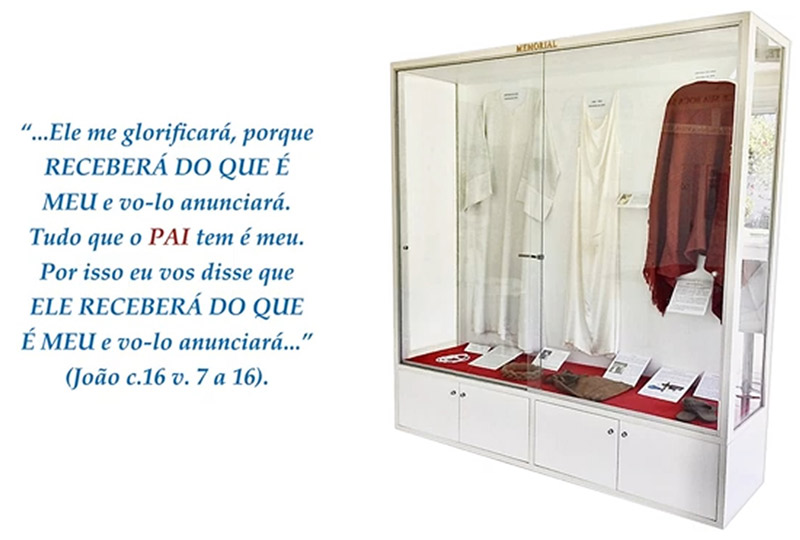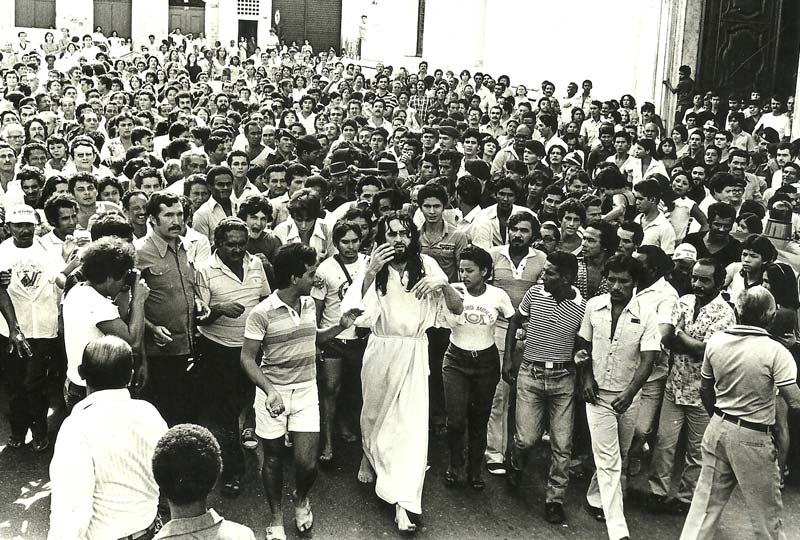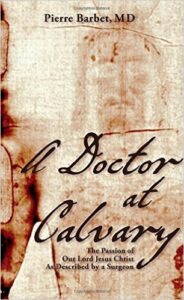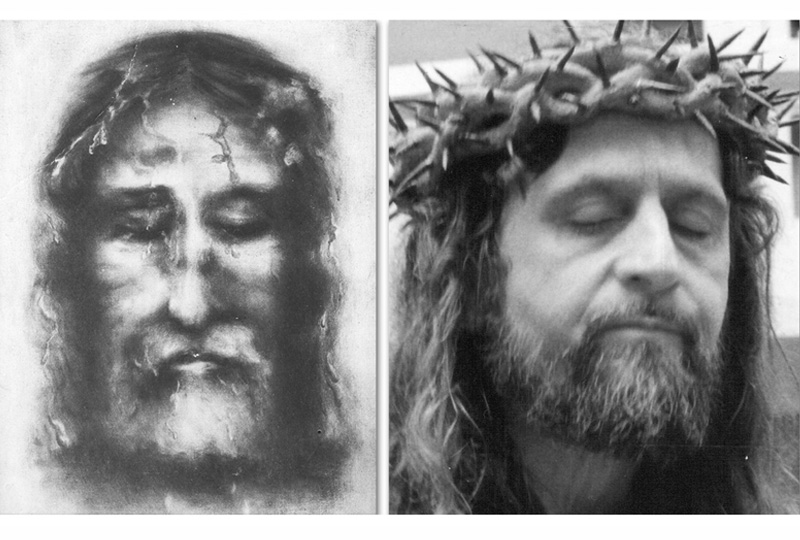What the Gospels don’t reveal about Christ’s sufferings, science does.
While the Gospels relate only the barest essentials concerning the physical suffering of Jesus, Dr. Pierre Barbet addresses these gaps with scientific inquiry. A Doctor at Calvary provides a forensic pathologist’s analysis of the Holy Shroud of Turin, which reveals the graphic account of Jesus’s suffering at the hands of the Romans. Through a modern medical lens, Dr. Barbet examines the methods of infliction and physiological effects of each wound. He also delves into the historic practice and mechanics of crucifixion.
This classic, with its engrossing and sympathetic portrayal of the Passion, has ignited religious devotion in clerics and laymen for over half a century. A Doctor at Calvary is a quintessential study for Lenten meditation and for those interested in understanding the crux of Christianity.
Dr. Barbet was a surgeon, and he describes in great detail, from his examination of the Shroud of Turin and from other historical sources, how Jesus Christ died on the cross. Because of his medical knowledge, he also believes that the Shroud is genuine–i.e., that it was not faked, since no painter could have done such a good job of getting the medical detail right. In addition, no medieval painter, at least, would have been willing to contradict the existing iconography, as the Shroud does. He brings up the point that, even though it clearly is the shroud of someone who was crucified, lots of people were crucified under Roman rule around that time. How do we know it’s Jesus? The marks from the crown of thorns are there–and that was not a customary part of the punishment, but rather unique in Christ’s case.
This book is full of just such fascinating detail, firmly placing the Passion of Christ in space and time and greatly enhancing one’s understanding of the Christian faith.
PREFACE OF “A DOCTOR AT CALVARY”
I HAVE for a long time been asked, but of late with more eagerness, to collect together in one book the results of my anatomical experiments, of my archaeological and scriptural researches, finally of my reflections on the Passion of Our Lord Jesus Christ. It is a subject which for more than fifteen years has in truth never been out of my thoughts, and at times has almost engrossed me. For has this world any more important subject for meditation than those sufferings, in which two mysterious truths have become materialised for mankind, the Incarnation and the Redemption? It is clearly both necessary and sufficient that mankind should adhere to these with the whole of their souls, and that they should loyally derive from them their rule of life. But, in this unique event, which is the culminating point of human history, the smallest detail seems to me to have an infinite value. One does not weary of examining the smallest particulars, even when the reticence of the Evangelists makes it necessary for us to build our structure on scientific bases, which, even though they may be neither scriptural nor inspired, are nevertheless reasonably solid hypotheses.
Theologians can imagine and describe to us the moral sufferings, which formed part of the Saviour’s Passion, beginning with those in the agony of Gethsemani, when He was overwhelmed with the weight of the sins of the world, and ending with His abandonment by the Father, which drew from Him the cry on the cross: “Eli, Eli, lamma sabachthanif” One may even venture to say that He continued to recite to Himself in a low voice the magnificent twenty-first psalm, of which these words are the first verse; a psalm which continues in notes of hope, and ends with a triumphal chant of victory.
But when the same theologians or exegetes wish to describe to us the physical sufferings of Jesus, one is struck with the difficulty which they find in helping us to take part in them, anyway in thought. The truth is that they scarcely understand them; there is little on this subject which seems more empty than the traditional sermons on the Passion.
Some years ago, my good friend Dr. Pasteau, the president of the Societe de Saint-Luc of Catholic Doctors in France, was visiting the Vatican with several high dignitaries of the Church. He was explaining to them, following on my researches, how much we now know about the death of Jesus, about His terrible sufferings, and how He had died, suffering from cramp in all His muscles and from asphyxia. One of them, who was still Cardinal Pacelli, and who, along with the others, had gone pale with grief and compassion, answered him: “We did not know; nobody had ever told us that.”
And it is indeed essential that we, who are doctors, anatomists and physiologists, that we who know, should proclaim abroad the terrible truth, that our poor science should no longer be used merely to alleviate the pains of our brothers, but should fulfil a greater office, that of enlightening them.
The primary reason for this ignorance is to be found, we must own, in the dreadful conciseness of the Evangelists: “Pilate . . . having scourged Jesus, delivered Him to them to be crucified … and they crucified Him.” Every Christian, no matter how little he may be liturgically-minded, hears these two phrases throughout the years, four times during Holy Week, in slightly different versions. But how much does that mean to him in the long reading of the Passion? The solemn chanting continues: one can hear the howls of the Jewish mob and the grave words of the Saviour, and unless it has prepared itself beforehand, the mind lacks the time to dwell on the ghastly sufferings to which these simple words refer.
The Evangelists certainly had no need to be more explicit. For the Christians who had listened to the Apostolic teaching, and who later on read the four Gospels, these two words, “scourging, crucifixion,” were all too full of meaning; they had first-hand experience, and had seen scourgings and crucifixions; they knew what the words meant. But for ourselves, and for our priests, they mean scarcely anything; they tell, indeed, of a cruel punishment. But they paint no definite picture. And one watches the unfortunate preacher desperately trying to express his sincere grief: “Jesus has suffered; He has greatly suffered ; He has suffered for our sins.”
To the man who knows what this means, who suffers in consequence, to the point of no longer being able to do the Stations of the Cross, there comes a terrible temptation to interrupt the orator, to tell him how much He suffered and in what way He suffered, to explain the quantity and quality of His sufferings, and finally how much He wished to die.
For several years I have had the supreme joy of hearing that in many churches my little Passion Corporelle’ has inspired, enlivened, and sometimes completely replaced the sermon on the Passion. During the war I even experienced the great happiness of being able to read it, at Issy-les-Moulincaux, to three hundred seminarists and their professors; it was in a paradoxical fashion, and by reversing the roles, a true example of the apostolate of the laity. I shall preach the Passion no more, but it is largely with a view to these clerics that I have wished to divulge my ideas, so that they may nourish tilcir devotion to Jesus crucified and may bring it out in their preaching.
That is why I have decided to collect all tllese ideas together in one book, which will enable me to develop thcm more easily. My anatomical experiments took place in the years 1932 and 1935. I described the first to my colleagues of tlle Societe de Sainl-Luc, whose judgment I valued more than any other. They were generous in their enthusiastic support and gave me the hospitality of their bulletin: in this were published les mains du Crucifié, May, 1933 ; les pieds du Crucifié et le coup de lance, March, 1934; la descente du croix et le transport au tombeau , March, 1938; l’ensevelissement de Jésus, March, 1948. I published the result of my first researches in a small book, les Cinq Plaies du Christ, in January, 1935; its fourth edition, supplemented with a chapter on the descent from the cross, appeared in 1948. In 1940 I produced my brochure, la Passion Corporelle, which appeared first of all in La Vie Spirituelle. The essay on the burial of Jesus appeared in March, 1948, as the result of a talk given to the Paris branch of the Société de Saint-Luc.
I can claim that since I finished my experiments the conclusions to which I came have never been reversed, though I remain opcn to any new discovery which may show me to have been wrong. It has always been my aim to look on this as a scientific question and to put forward my conclusions as hypotheses, in my opinion solidly established hut capable of modifica tion, anyway in their details. But I have nevcr ceased to reflcct on this form of torment and on the pictures of the Holy Shroud, thc authenticity of which is to my mind assured by a closely-knit web of anatomical proofs.
From this long, continuous meditation there has emerged, without furtller experiment, a series of complementary explanations which seem to me as luminous as thcy are simple. We find, for instance, the double flow of blood from the wrist, due to the do uble movement of straightening and relaxation on the part of the Crucified, and the thoracic flow on the back due to the method of carrying to the tomb. We shall meet with all this later on, and we shall also see how these scientific conclusions are fully in accordance with the Gospels.
May I reassure my readers that in this book I am making no claim that I can provide a complete and definite solution to the problem of the Holy Shroud. God forbid! My aim is more modest, to set out my views as to the actual state of the question, following on a long study of the subject, or at least to describe the reasonably homogeneous and logical view which I have been able to reach so far. I shall point out what I consider to be doubtful and what I consider to be definitely admitted as true. That is the spirit of the scientific and experimental method. But I shall never forget that the shroud, as H .H . Pope Pius Xl used to say, is still surrounded by many mysteries. The future has no doubt many surprises in store for us.
Another thing which I learnt in the course of my publications, is the difficulty of explaining scientific conclusions to the uninitiated, for these presuppose a whole course of previous teaching. When writing for my colleagues, everything went easily, and I was able to make myself understood in a few words. M y natural tendency to be concise had every advantage, since it made my demonstration more precise and compact. But how often have those who were not doctors asked me for further information or have ared objections, the answers to which, as well as the explanations, had already been printed :n my work. Yes, it had all been clearly explained, but in sentences too short for one who wa s not initiated, and thcre had been no repetitions; I had not made my point strongly enough. In Inter editions I profited by this experience, and I shall do so even more thoroughly in this book.
As is perhaps known, my anatomical experiments were undertaken after the exposition of the shroud at Turin in 1931. My oId friend, Father Armailhac, whom God has now called to heaven, visited the Lacnnec conference of students of medicine in Paris, in order to show us the latest photographs, which I myself used. He wished to obtain the opinion of anatomists. It is thus quite natural, since my first aim was to verify the anatomical accuracy of these marks (this aim has since then been considerably enlarged), that I should try to give the reader a shorr account of this remarkable relic, and of tile passionate arguments which it has aroused, even and indeed especially among Catholics.
My studies also led me to inquire into everything which, in pagan and Christian archa:ology, in the ancient texts (apart from the Scriptures) and in the history of art can give us some information about this form of punishment which was used by the Romans; in this case the executioners were the Roman legionaries and the judge was a Roman procurator. In a book such as this, which is not bound to be as compact and light as a brochure, I can explain tile results of these researches and experiments; I shall not restrict myself but I shall try and avoid all pedantry.
I had kept out of my book on the five wounds everything dealing with the other sufferings of Jesus, previous to His crucifixion: the sweat of blood, the cruelties inflicted 00 Him as a prisoner, the scourging, the crowning with thorns, the carrying of the cross, astonishing traces of which are to be seen on the Holy Shroud. My aim here, as the completion of my work, is to try and deal with all these questions, always in the same medical spirit.
I shall also give the opinions I have formed io regard to the descent from the cross and the carrying to the tomb, and the results of my exegetical (I hope the exegetes will forgive me), historical and philological researches, on the subject of the shroud and the burial.
I often wonder, indeed, why I should have been chosen to make these researches. I am aware that for forty years I have taken a keen interest in biblical exegesis, and that I have eagerly pored over that magnificent harvest of works which is one of the glories of the Church in France, from those of Father Lagrange to tilose of Father de Grandmaison, to mention only two of our writers who are now dead. But there are so many others that one can consult, taking from each the fairest flowers in his garden. I have retained from the solid classical education which I received (according to the usual formula) the capacity to go o,-er the Greek and Latin, but alas, not the Hebrew texts. I have always taken a passionate interest in archaeology and in the history of art, and I have studied the manifestations of the Christian spirit, from the frescoes in the catacombs, which I visited over a long period, down to the elaborations of modern art. Finally, I am first of all a surgeon, and thus well versed in anatomy, which I taught for a long time; I lived for thirteen years in close contact with corpses and I have spent the whole of my career examining the anatomy of the living. I can thus, without presumption, write ” the Passion according to the surgeon “; may we say the cultivated surgeon, since that is what it is his absolute duty to be.
The reader may smile, I think, when he reads ::his naive Apologia pro dania. He should understand that it is not just a list of titles with which I am seeking to justify myself, but an attempt to excuse my boldness. For all this fill ed me with the desire to face tilcse problems, with the hope that, God willing, I might arrive at their solution. Furthermore, I only undertook my experiments, when I had made sure tha t none of my colleagues were doing the same.
But I feel reassured, as I read over again the delightful chapter IX of the Fioretti, when Brother Masseo, in order to tell the humility of his master, kept saying to St. Francis: “Perche a tte; perche a tte – Why you, rather than anyone else?” And Francis answered Brother Masseo: “Because the eyes of God on high have not seen anyone amongst sinners who is any more vile or more unworthy than . . . I am. And for this reason. … He has chosen me to perform this marvellous work in order to confound the nobility and the greatness and the beauty and the strength and the wisdom of this world, so that it may be understood that all virtue and all good come from Him, and not from creatures, and that no person can glorify himself when in His presence; but if anyone would glorify himself, let him glorify himself in the Lord, to Whom be honour and glory for ever.”
I would not finish this preface without thanking, as I should, the Missionaries of the Sacred Heart at Issoudun, and their publisher, my old friend, Dillen, who have between them printed and distributed my little books with 2 truly fraternal devotion. I cannot do better than confide this book to them, to whom it already owes so much!
Pierre Barbet, PARIS, All Saints Day, 1949












